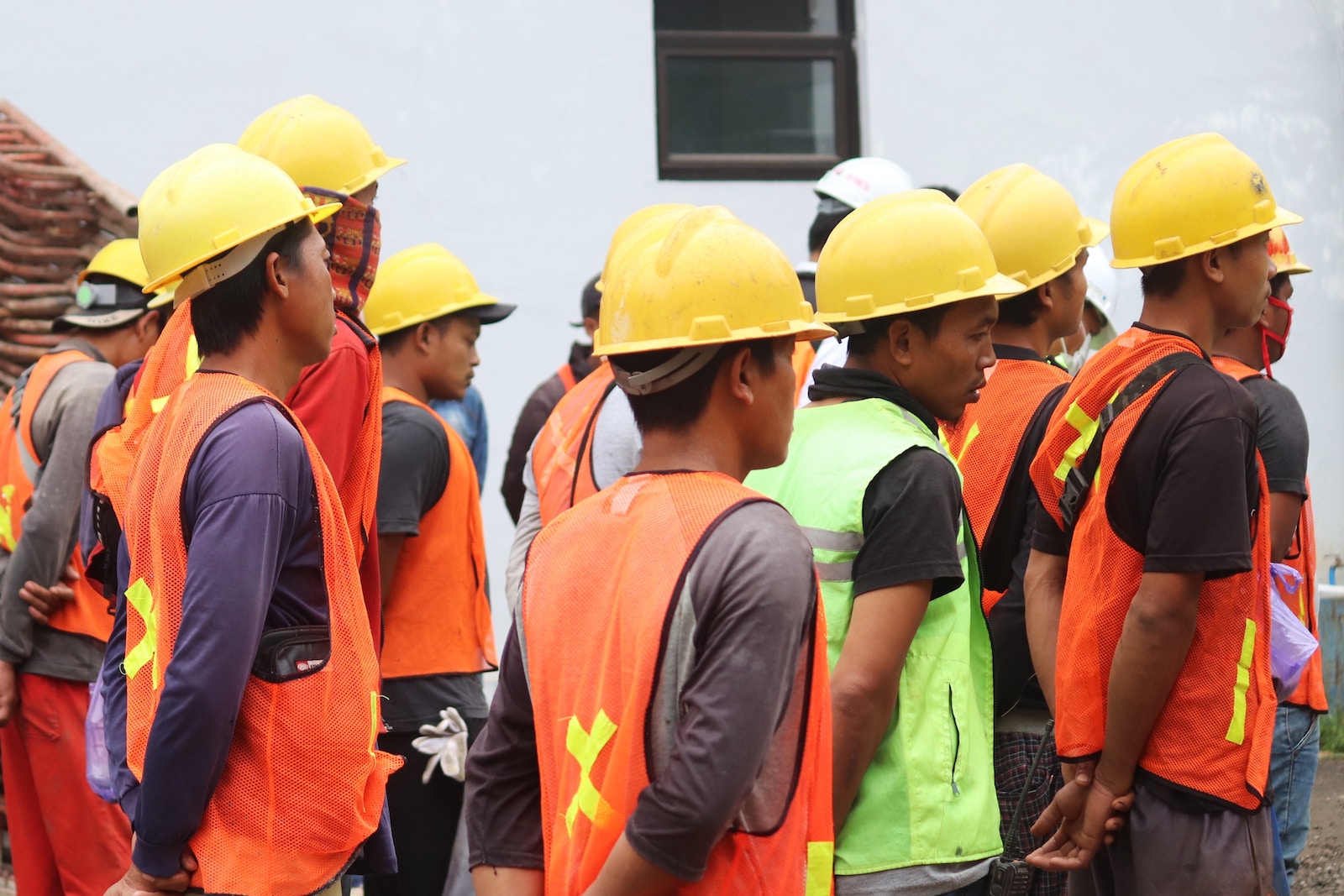Introduction to Site Supervision Safety Training Scheme (SSSTS)
One of the most critical aspects of ensuring safety on construction sites is having well-trained and competent site supervisors. Site supervisors are responsible for overseeing the work being carried out, managing the workforce, and ensuring that all activities are being conducted safely and in accordance with relevant health and safety regulations.
The Site Supervision Safety Training Scheme (SSSTS) is a widely recognized and respected training program specifically designed for site supervisors in the construction industry. This training scheme aims to provide supervisors with the necessary knowledge and skills to effectively manage safety on construction sites and fulfill their legal duties.
The SSSTS course covers a range of topics that are essential for site supervisors, including understanding their legal responsibilities, identifying and controlling hazards, promoting a positive safety culture, and effectively communicating safety information to the workforce.
By completing the SSSTS training, site supervisors will gain a comprehensive understanding of health and safety legislation, risk assessment techniques, and the importance of adopting a proactive approach to safety. They will also learn how to effectively motivate and engage with their teams to ensure that safe working practices are followed at all times.
The SSSTS course is typically delivered over two days and combines theoretical knowledge with practical exercises and group discussions. The course is interactive and engaging, allowing supervisors to learn from their peers and share best practices.
Upon successful completion of the SSSTS training, site supervisors will be awarded a certificate that is valid for five years. This certification demonstrates their competence in managing safety on construction sites and can be a valuable asset when seeking employment or promotion within the industry.
In conclusion, the Site Supervision Safety Training Scheme (SSSTS) is a vital training program for site supervisors in the construction industry. By completing this course, supervisors will gain the necessary skills and knowledge to effectively manage safety on construction sites, protect their workforce, and ensure compliance with health and safety regulations.
The Importance of Safety in Construction
Safety is an essential aspect of any construction project. It not only ensures the well-being of the workers but also helps to prevent accidents, injuries, and even fatalities. Construction sites are inherently hazardous due to the presence of heavy machinery, elevated platforms, and the involvement of various construction materials. Therefore, prioritizing safety is crucial in mitigating potential risks and ensuring a safe working environment for everyone involved.
One of the key reasons why safety is paramount in construction is to protect the workers. Construction workers face a multitude of risks on a daily basis, such as falls from heights, exposure to hazardous materials, and accidents involving heavy machinery. By implementing safety measures, such as providing proper training, using personal protective equipment (PPE), and maintaining clear communication channels, employers can significantly reduce the likelihood of accidents occurring. This, in turn, helps to safeguard the physical well-being of the workers and prevents long-term health issues.
Safety in construction is not limited to the workers alone; it also extends to the public. Construction sites often exist close to residential or commercial areas, which means that there is a potential risk to the surrounding community. For instance, falling debris or unsecured materials can pose a danger to pedestrians or nearby buildings. By prioritizing safety and implementing measures such as perimeter fencing, warning signs, and regular inspections, construction companies can minimize the risk of accidents occurring and protect the public from harm.
Moreover, safety measures in construction not only prevent accidents but also contribute to the overall efficiency and productivity of the project. When workers feel safe and secure in their working environment, they are more likely to focus on their tasks and perform them efficiently. On the other hand, an unsafe workplace can lead to increased stress, distraction, and decreased productivity. By investing in safety measures, construction companies can create a positive work environment, boost morale, and ensure that projects are completed on time and within budget.
Another crucial aspect of safety in construction is compliance with industry regulations and standards. Construction sites are subject to various safety regulations imposed by local authorities and industry organizations. Adhering to these regulations not only ensures legal compliance but also demonstrates a commitment to the well-being of the workers and the public. By staying up-to-date with safety standards and continuously improving safety practices, construction companies can mitigate risks, avoid costly fines and penalties, and maintain a positive reputation within the industry.
In conclusion, safety is of utmost importance in the construction industry. It protects the well-being of workers, prevents accidents, safeguards the public, enhances productivity, and ensures compliance with regulations. By prioritizing safety and implementing effective safety measures, construction companies can create a secure working environment and contribute to the overall success of their projects.
The Four Safety Critical Questions
When it comes to safety in any environment, there are four critical questions that need to be addressed. These questions serve as a framework for evaluating and mitigating potential risks and hazards. By thoroughly answering these questions, organizations can ensure a safe and secure working environment for their employees and stakeholders.
1. What can go wrong?
The first question involves identifying all potential hazards and risks that could occur in a specific environment or situation. This requires a thorough analysis of the processes, equipment, and activities involved. By identifying all possible scenarios, organizations can proactively implement measures to prevent accidents or incidents from happening.
2. What are the potential consequences?
Once the potential hazards have been identified, it is crucial to assess the potential consequences that could arise from each hazard. This includes considering the severity of injuries, damage to property, impact on the environment, and any other negative outcomes. Understanding the potential consequences allows organizations to prioritize their safety efforts and allocate resources effectively.
3. What are the underlying causes?
To effectively prevent accidents and incidents, it is essential to identify the underlying causes of the potential hazards. This involves analyzing the root causes, such as human error, equipment failure, or procedural deficiencies. By addressing the underlying causes, organizations can implement targeted solutions to mitigate the risks and prevent future incidents.
4. What safeguards are in place?
The final question focuses on evaluating the existing safeguards and control measures that are in place to minimize risks. This includes examining the effectiveness of safety procedures, training programs, safety equipment, and emergency response plans. Regular evaluation and improvement of safeguards ensure that they remain effective and up to date.
Answering these four safety critical questions provides organizations with a comprehensive understanding of the risks and hazards present in their environment. It allows them to develop robust safety strategies, implement appropriate control measures, and continuously improve their safety performance. By prioritizing safety and addressing these questions, organizations can create a culture of safety, protect their employees, and safeguard their reputation.
Understanding the Site Supervision Safety Training Scheme (SSSTS)
The Site Supervision Safety Training Scheme (SSSTS) is a widely recognized and respected training program designed to provide supervisors and managers with the necessary knowledge and skills to promote and maintain a safe working environment on construction sites. This scheme is primarily aimed at individuals who are responsible for supervising others and ensuring compliance with health and safety regulations.
The SSSTS course covers a range of important topics, including understanding the legal responsibilities of supervisors, identifying hazards and risk assessment, effective communication and leadership skills, accident prevention and control, and the importance of monitoring and reviewing safety performance. By completing this training, supervisors can develop a comprehensive understanding of the key principles and practices of health and safety management on construction sites.
One of the main objectives of the SSSTS is to ensure that supervisors have the ability to identify and control hazards in the workplace, as well as the skills to effectively communicate and enforce safety procedures with their team. This includes understanding the importance of risk assessment and implementing control measures to prevent accidents and injuries.
The SSSTS training also emphasizes the role of supervisors in promoting a positive safety culture within the workplace. This involves creating an open and transparent environment where workers feel comfortable reporting hazards and near misses, and where safety is prioritized above all else.
Furthermore, the SSSTS course provides supervisors with the tools and knowledge to effectively monitor and review safety performance on construction sites. This includes conducting regular inspections, identifying areas for improvement, and implementing corrective actions to prevent future incidents. By doing so, supervisors can play a vital role in continuously improving safety standards and reducing the likelihood of accidents and injuries.
Overall, the SSSTS is an essential training scheme for anyone in a supervisory or managerial role within the construction industry. By completing this course, individuals can gain the necessary skills and knowledge to effectively promote and maintain a safe working environment, ensuring the well-being and protection of all workers on the site.
Benefits of Completing the SSSTS Course
Completing the SSSTS (Site Supervisor Safety Training Scheme) course can bring numerous benefits to both individuals and organizations in the construction industry. Here are some of the key benefits:
1. Enhanced Safety Knowledge: The SSSTS course provides participants with a comprehensive understanding of health and safety regulations, risk assessment techniques, and hazard management principles. This knowledge equips site supervisors with the skills necessary to identify potential safety hazards and take appropriate measures to prevent accidents and injuries.
2. Legal Compliance: By completing the SSSTS course, site supervisors ensure that they are up to date with the latest health and safety legislation and regulations. This helps organizations to meet their legal obligations and avoid costly penalties and legal issues that may arise from non-compliance.
3. Improved Communication and Leadership Skills: The SSSTS course also focuses on developing effective communication and leadership skills, which are essential for site supervisors to effectively manage and coordinate construction projects. These skills enable supervisors to clearly communicate safety requirements to their teams, leading to a safer working environment.
4. Reduced Accident Rates: With the knowledge gained from the SSSTS course, site supervisors are better equipped to identify and control potential hazards, reducing the risk of accidents and injuries on construction sites. This can lead to a significant reduction in accident rates, helping to protect the well-being of workers and minimizing the financial and reputational impact on organizations.
5. Increased Productivity: A safe working environment is crucial for maintaining productivity on construction sites. By completing the SSSTS course, site supervisors can contribute to creating a culture of safety, where workers feel confident and motivated to work efficiently. This can lead to increased productivity and improved project outcomes.
6. Professional Development: The SSSTS course is recognized and widely respected within the construction industry. By obtaining the SSSTS certificate, site supervisors enhance their professional profile, demonstrating their commitment to safety and continuous professional development. This can open up new career opportunities and enhance job prospects within the industry.
In summary, completing the SSSTS course brings a range of benefits, including enhanced safety knowledge, legal compliance, improved communication and leadership skills, reduced accident rates, increased productivity, and professional development. By investing in the training and development of site supervisors, organizations can create safer working environments, protect their workforce, and enhance their overall success in the construction industry.








